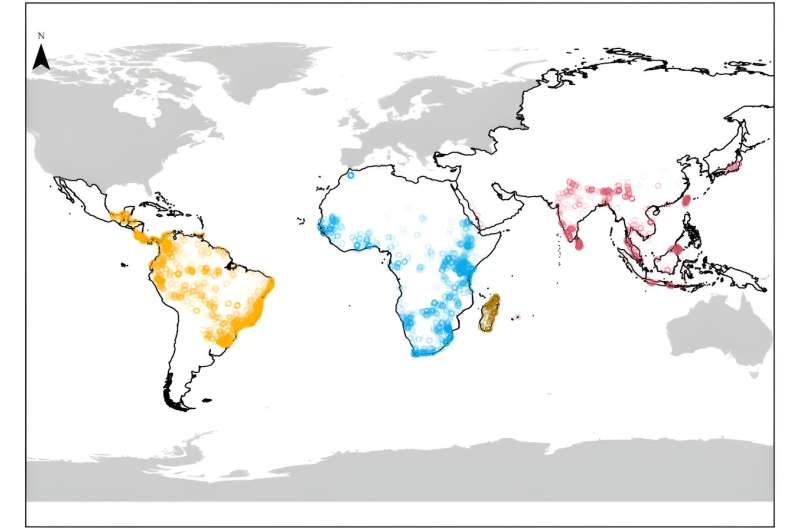An international team of researchers has conducted a groundbreaking study on the extinction risk of non-human primates worldwide due to climate change. The study, published in the Proceedings of the Royal Society B, examines how changing environmental conditions, such as shifts in rainfall and vegetation, may impact the survival of these remarkable species. The findings shed light on the intricate relationships between primates and their habitats, offering valuable insights for conservation efforts.

Revealing What Doomed Closest Primate Relatives to Extinction
The research team, which included biologists as well as planetary scientists and conservationists, analyzed primates from 22,705 sites across the four major regions in which they are found — Madagascar, Asia, Africa and South/Central America (including the Caribbean).
Using information on shifts in rainfall, changes in vegetation cover and primate characteristics like body size, range over which the primates are found and their sleeping habits as well as the predators they face and a measure of how far evolutionarily distinct from other species each type of primate is, the researchers created a way to assess how threatened these species are with extinction as their environment changed. In a study published on 16 January in Diversity and Distributions, scientists predict that how the changes play out will depend greatly on where they live and what kind of primate each are; some face higher risks of climate change than others or other heightened threats such as deforestation, mining or pollution.
How Regional Strength of Recreational and Commercial Hunting Influences Primate Survival
Another major finding from the study is how changes in rainfall can have completely opposite impacts on primate populations — such are the complex interactions fostered by rain. The researchers added that such erratic rainfall in the Neotropics would threaten many species, while actually lowering the threat to Madagascan and African primates.
It also highlights the varied and intricate relationship that exists between environmental drivers and primate species-specific resiliency. A further 33 primate species, identified here as at high risk of extinction for the first time, point to an underlying vulnerability that requires more targeted assessment and conservation planning.
Protecting Primate Futures: A Call To Action
This study, according to the researchers, underscores serious concerns for all primates worldwide as temperatures rise across the planet. They highlight the importance of global action to combat climate change and local protection against threats like deforestation, mining and pollution if these remarkable creatures are to persist.
This study, by illuminating the factors associated with extinction risk in primates should be a wakeup call to policy makers, conservationists and the world at large to turn their attention towards conserving primate habitat and adopting holistic strategies for ensuring that these irreplaceable members of our global biodiversity have a future.
